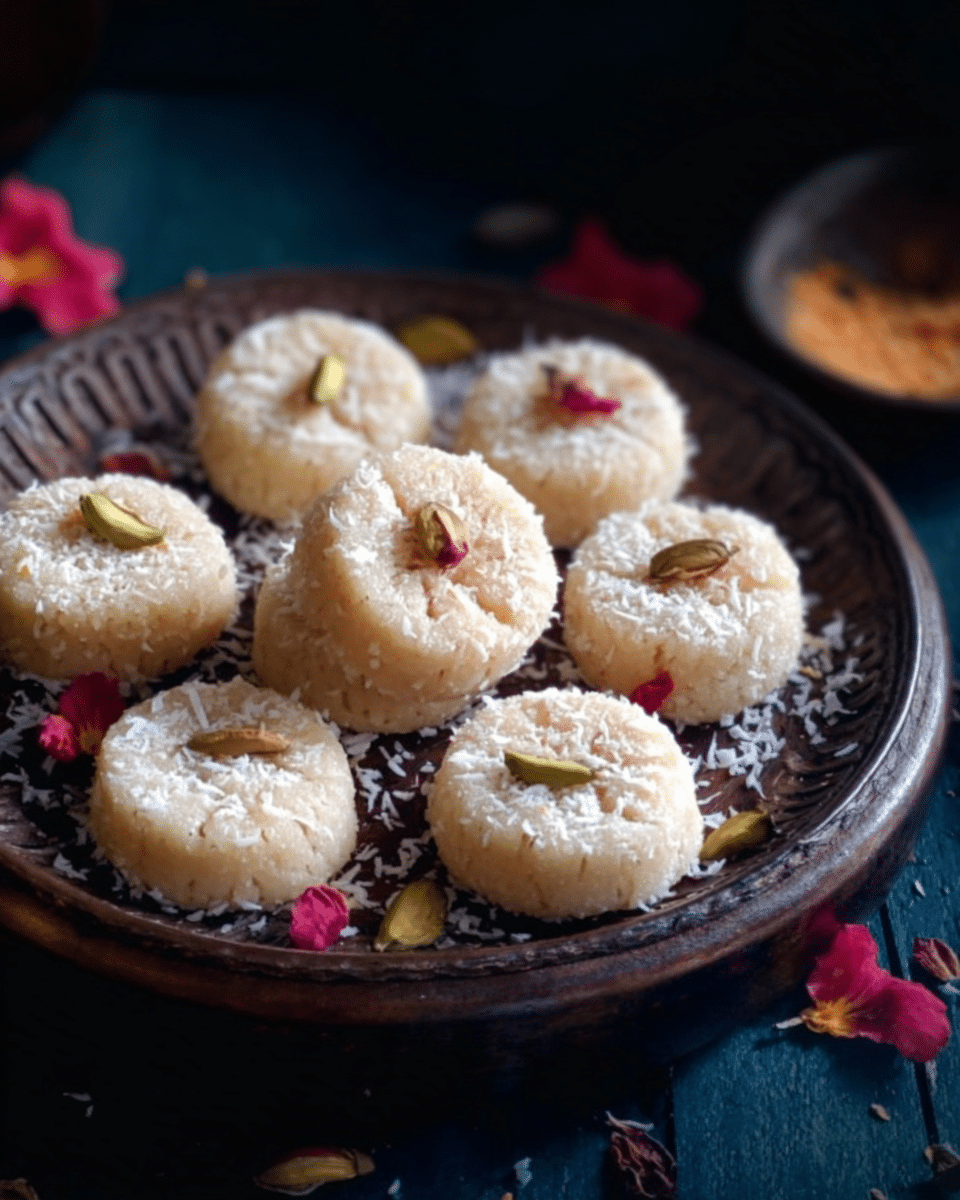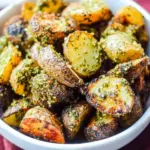These Coconut Pedas are a dreamy, creamy treat that brings together the tropical taste of coconut with the aromatic warmth of cardamom and saffron. They’re soft, melt-in-your-mouth fudge-like bites made with simple pantry ingredients and minimal effort.
Perfect for any Indian festival or even an everyday sweet craving, they come together in under 15 minutes. Garnished with saffron strands, pistachios, and rose petals, these pedas aren’t just a treat for your taste buds—they’re a visual delight too. Whether you’re a seasoned cook or a beginner in the kitchen, this recipe promises festive vibes with minimal fuss.
Full recipe:
Ingredients:
-
1 cup desiccated coconut
-
1–2 tbsp ghee
-
¼ cup milk powder
-
½ cup condensed milk (adjust as needed)
-
½ tsp rose water
-
1 tsp cardamom powder
-
Few chopped pistachios for garnish
-
Few strands of saffron soaked in milk
-
Few dried rose petals (optional)
Directions:
-
In a thick-bottomed non-stick pan on low flame, dry roast the desiccated coconut for about 2 minutes. Stir continuously to prevent browning.
-
Once aromatic, transfer to a bowl and set aside.
-
In the same pan, melt ghee over low heat. Add the condensed milk and cook for 1 minute.
-
Add milk powder, roasted coconut, cardamom powder, and rose water. Mix well.
-
Cook for 1–2 minutes, stirring until the mixture thickens. Add a bit more condensed milk if needed.
-
Do not overcook or the pedas will become hard and chewy.
-
Switch off the flame and transfer the mixture to a plate. Let it cool slightly for 3–4 minutes.
-
Grease your palms with ghee, take small portions, roll into a ball, and flatten gently.
-
Use a knife or fork to make a decorative imprint on top.
-
Garnish with pistachios, saffron strands, and dried rose petals.
Prep Time: 5 minutes | Cooking Time: 10 minutes | Total Time: 15 minutes
Kcal: ~110 kcal per piece | Servings: 12 pedas






